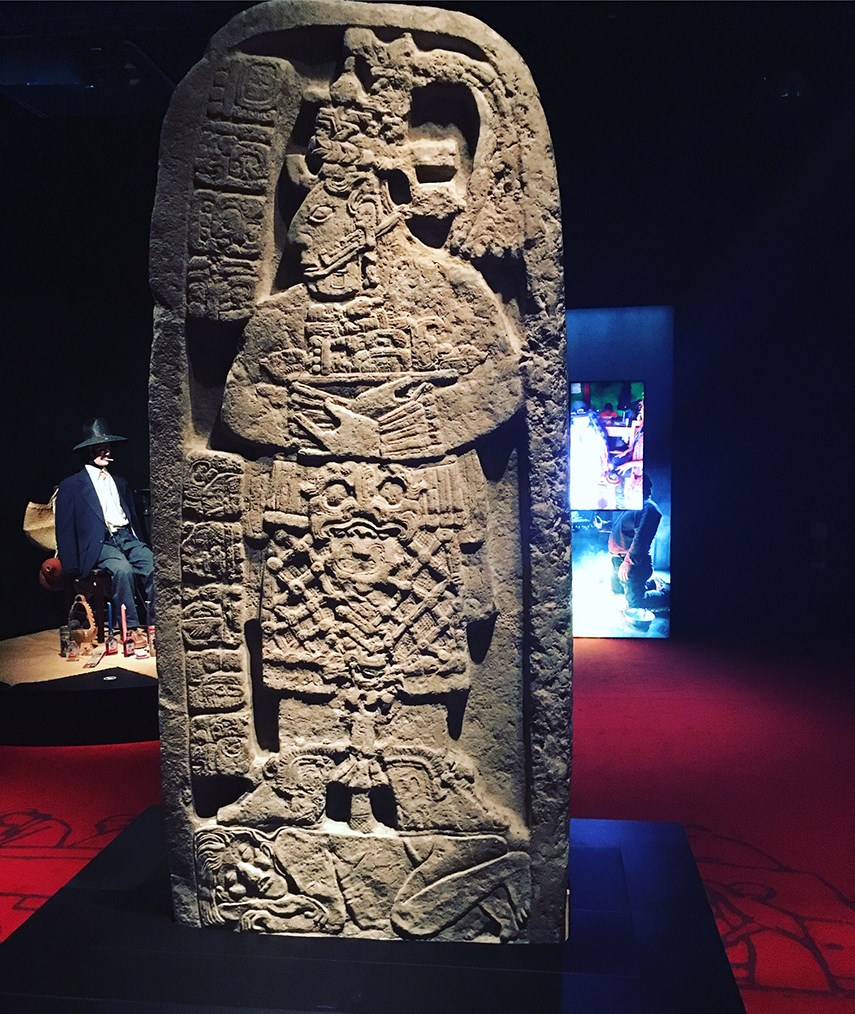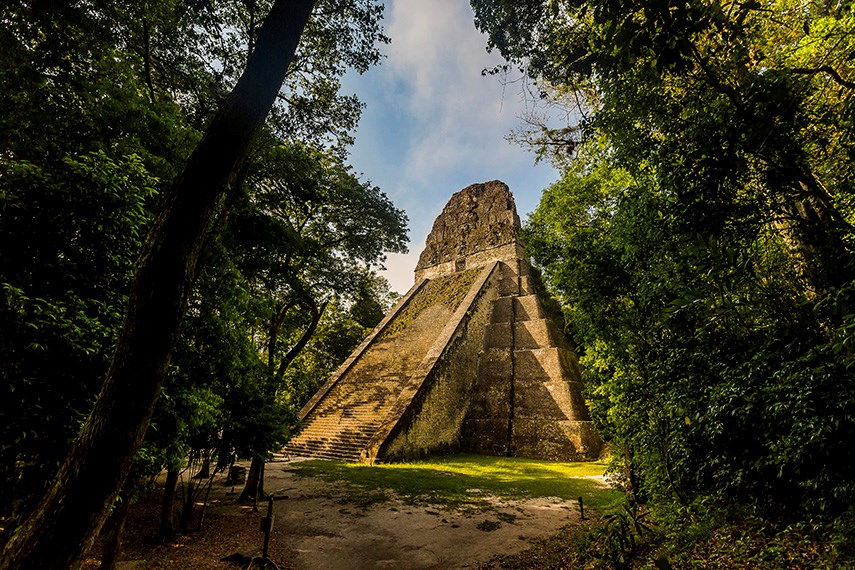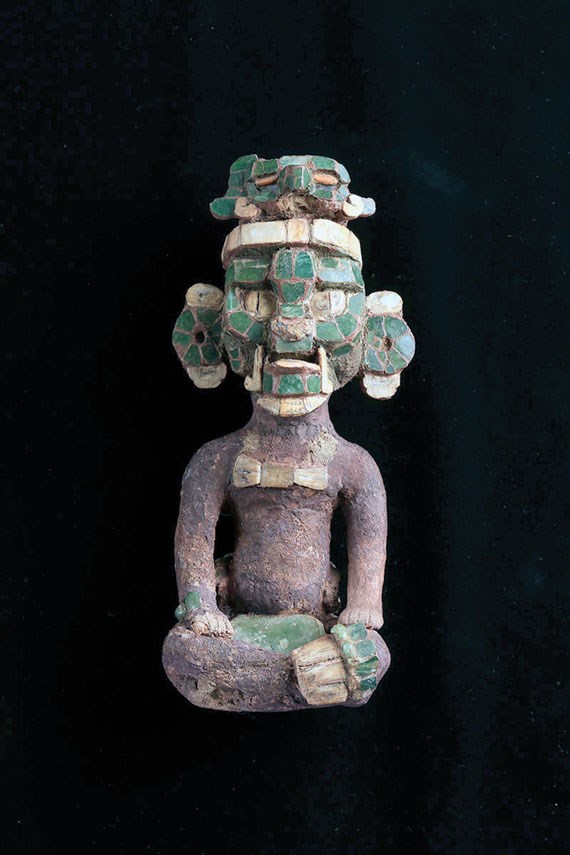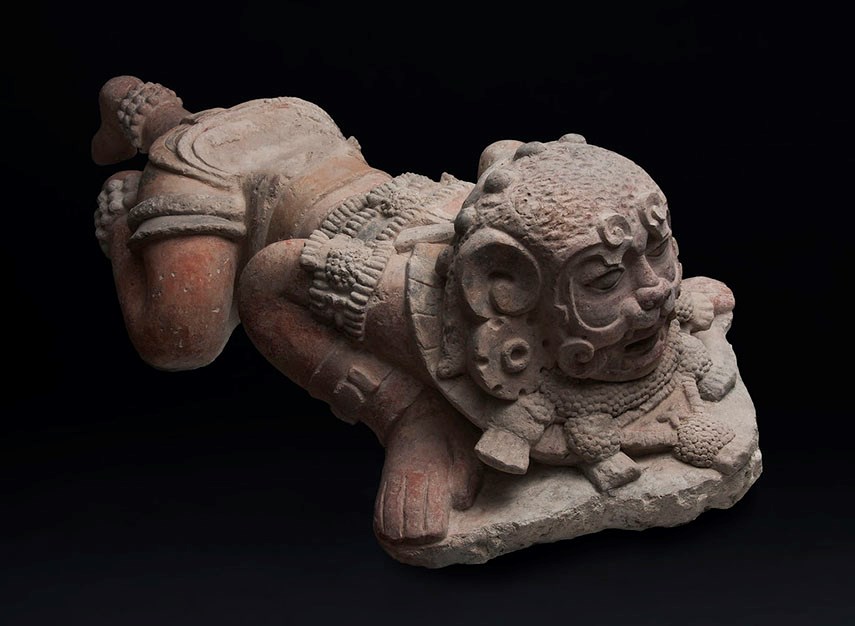Maya: The Great Jaguar Rises, Royal BC Museum world premiere exhibition highlighting Maya civilization past and present in collaboration with lending partners including the most relevant museums and collections of Guatemala, until Dec. 31.
“At the height of Classic civilization in the eighth century, the Maya landscape in all its variety supported millions of people. Although the inscriptions from that period tell us the largest domain was Tikal, a kingdom of around 500,000 souls, the average dominion was much smaller, holding jurisdiction over only 30,000 to 50,000 subjects. Maya kings had to cope with a political geography of enormous complexity resembling the bewildering variety of kingdoms, dukedoms, baronies and other title lands of the European Middle Ages. A closer parallel might be the city-states of Classical Greece: little countries that were politically autonomous, yet culturally, socially and economically interdependent.” – A Forest of Kings (The Untold Story of the Ancient Maya) by Linda Schele and David Freidel (1990).
In Stela 24, a limestone Maya dedication slab unearthed in Naranjo, Guatemala in the 1960s, Lady Six Sky, dressed in the accoutrements of both a moon goddess and a warrior king, stands victorious on the back of Kinichil-Cab, a member of Ucanal nobility taken captive in battle.
Lady Six Sky (also known as Wac-Chanil-Ahau, a Don Pilas princess and daughter of Flint-Sky-God K), was sent to Naranjo in the seventh century to establish a new royal dynasty, which was accomplished through war, power plays and the birth of her son, Smoking Squirrel, on Jan. 6, 688.

The limestone slab is part of a rare collection of more than 300 Maya cultural artifacts from Guatemala currently on view in a world premiere exhibition at the Royal BC Museum in Victoria.
It’s easy to get lost in the details as you pass through the rooms of the massive exhibit. Maya scribes were meticulous in both the quality of their art and the amount of information they provided on events that took place millennia ago.
According to Linda Schele and David Freidel in their study, A Forest of Kings: “The Maya writing system used to record this ancient history was a rich and expressive script, capable of faithfully recording every nuance of sound, meaning and grammatical structure in the writers’ language. Calligraphically, it has an unsurpassed elegance, deriving its form from the beauty of freely flowing painted line. Maya scribes, whether carving limestone, engraving jade, inscribing shell or incising bone, never lost the eloquence of their writing’s original painterly grace.”
The jade, ceramic, gold, stone and textile artifacts in the Royal BC Museum exhibit give an exhilarating overview of the Mesoamerican culture from Pre-Classic, Classic, and Post-Classic periods through to the present day where more than six million people still speak 30 languages connected to the two Mayan languages that were used in the ancient texts: Yucatecan and Ch’olan.
Many people were involved in assembling the exhibition, including German epigrapher Nikolai Grube, who is an important player in the ongoing decipherment of the Maya hieroglyphic script, Royal BC Museum staff, Guatemalan government representatives as well as staff from the Museo Nacional de Arqueología y Etnología (MUNAE) and the La Ruta Maya Foundation.
The majority of the artifacts in the show come from MUNAE while another 14 have been supplied by La Ruta Maya who are a private organization that tracks down archeological objects that have been removed from the country in past decades, with the purposes of repatriation to Guatemala.
Because Maya: The Great Jaguar Rises contains rare and sensitive cultural items the exhibition almost didn’t happen at all, says Royal BC Museum’s Head of Knowledge Leah Best.
“We originally had more objects from La Ruta Maya but the Guatemalan government, and the representatives we were working with, had concerns about the practice of repatriating objects, i.e. potentially creating a market for looted or objects of unknown origin but that could definitely be traced back to Guatemala. If you go through the exhibition there’s a symbol next to the objects from the La Ruta Maya Foundation that says ‘Object of unknown origin’ and that was the agreement we reached with the Guatemalan government in order to have those particular objects signed on the export permit.”
Best visited Guatemala three times during the planning of the exhibition and travelled to several sites including Tikal, Lake Atitlan and the Western Highlands.
“It was such a privilege to work on the project,” she says. “We went down because the Guatemalan government . . . needed to trust that we knew what we were doing, that we were going to care for these objects in the most professional manner possible. This is the largest exhibition of Maya Guatemala objects ever and it’s a big deal to sign an export permit on over 300 objects to leave the country so they needed to feel comfortable with us.”

In April of this year Best travelled down to Guatemala City with Royal BC Museum Deputy CEO and Vice President Joanne Orr to sign export permits and they were told at that point some of the objects were no longer available for export and were instead offered an opportunity to choose replacements.
“We had one day,” says Best. “Nikolai Grube, who is a professor at the University of Bonn in Germany, myself, the exhibit designer and the representative of the Museum’s Partner that we were working with, all went to the MUNAE, the national museum. Nikolai was a hero. Because we had come so far along in the design process we already had cases that were built – it wasn’t just a matter of replacing objects we needed to replace those Ruta Maya objects with objects that supported the exhibition themes and also fit in the cases that had already been designed.
“It was a process of Nikolai deciding, yes, this fits with the interpretive storyline and then our designer literally went in with a tape measure and going, ‘Yes, this will fit.’ It was a very long day.”
The team went to a restaurant in the evening, pushed tables together and came up with a list of replacement objects that they submitted to the Guatemalan authorities.
“We had to push back our fly-back date,” says Best. “Just before we had to leave for the airport we were able to pull it all together and do the signing.”
The collection, which still needed to go through conservation assessment eventually arrived three weeks before Maya: The Great Jaguar Rises first opened in May.
“The show in Europe ended at the Classic period, which was around 900 CE,” says Best. “Because we knew we wanted to have a contemporary section we added a Post-Classic period so the visitor didn’t have to leap from 900 CE to the present day. The Post-Classic section is from about 900 CE to 1500, right around the time when the Spanish arrived.”
The exhibition offers visitors an immersive experience and features an array of artifacts from different regions and time periods.
Several of the objects, including the recently excavated La Corona steps and Altar 5 from the Petén region, have never been exported outside Guatemala before.
“Some of the steps from La Corona were literally still in the crate,” says Best. “La Corona is a dig in Guatemala and the crates were in the vault of the National Museum. We were prying them open to look at them as they had just come from the site.”
Another unforgettable must-see item in the exhibition, from the Early Classic period (ca. 250 AD- 600 CE) in the Southern Maya Lowlands, is “Lurking Jaguar-masked Warrior” the only known well preserved example of a large-size, three-dimensional stucco sculpture with its original color.

According to La Ruta Maya, the sculpture “was initially found in the mid-1990s during the perforation of a water well in a cattle ranch, located southwest of Lake Peten Itzá, on the way to La Libertad (El Petén, Guatemala), where surrounding mounds were reportedly destroyed. The figure was severely broken during its retrieval by local workers and sold in pieces through the illicit market. While kept in a private collection, away from the public view, it was registered at the Registro de Bienes Culturales in 1996 and restored.” The foundation obtained the piece in 2013 and made it available for the exhibition.
Everything about the Maya seems epic and otherworldly and the Royal BC Museum has brought the culture to life through its presentation.
“I’ve seen a lot of exhibitions and this is one of my very favourites,” says Best. “Maybe it’s because I was so involved. I have a lot of praise for the Royal BC Museum for the development of a show that carries real risks to getting it done and I’m very proud to work for an institution that has the courage to go where few museums have gone before in terms of working with a developing country like Guatemala and supporting their needs and being committed to bringing a show like this to North American audiences.”
The exhibition coincides with UNESCO’s Year of Indigenous Languages and will highlight the 30 Maya languages still spoken today and complements the museum’s permanent Our Living Languages exhibition, which highlights the revitalization of Indigenous languages in B.C.



